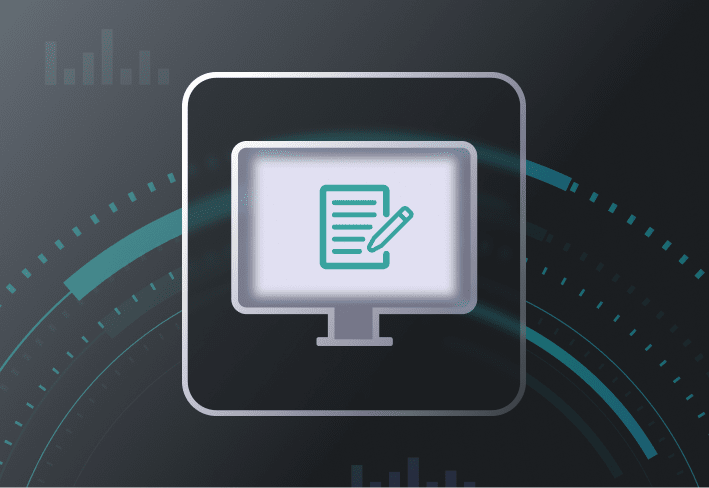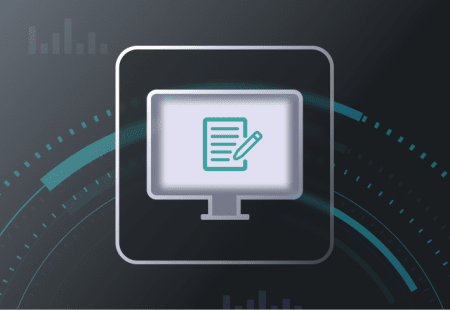Conventional wisdom says to ditch deprecated software ASAP. After all, it’s officially no longer recommended for use. Plus, even if the developer has yet to announce it, that software may be on the fast track to end-of-life (EOL) status (i.e., the software graveyard). But sometimes you just can’t get rid of software as quickly as you’d like. Whether you still need it to perform business-critical tasks or you have a strong emotional attachment that you’re still working through with your therapist, some situations call for temporary delays.
We’ll walk you through the red flags that indicate it’s time to get rid of that deprecated software as soon as your quad shot of espresso hits. But we’ll also share the yellow flags that you might be able to hang on to your favorite deprecated software just a little bit longer.
Deprecated feature vs. deprecated software vs. EOL software
Before we can get into when to ditch deprecated software, we first need to dive into a few key terms: deprecated feature, deprecated software, and EOL software. While some sources use these terms interchangeably, they aren’t the same. Understanding the differences can give you a better idea of a transition’s urgency.
Deprecated features
Deprecated features are aspects of the software that are being phased out. Whether it’s a deprecated API, a deprecated function, or some other deprecated components, you may need to start looking for alternative solutions for some aspects of the product to replace obsolete features. However, the product itself is not slated to go away anytime soon, so it should still receive relevant security updates and bug fixes.
Deprecated software
Deprecated software is still available but no longer recommended for use. This often happens when there are newer alternatives that a developer is pushing users toward. While deprecated software may still get the occasional bug fix or security patch for the older version, don’t expect any significant new features or future update. And with the dreaded term “deprecate” being thrown out there, you should probably start thinking about your options (if you haven’t already).
EOL software
End-of-life (EOL) software is officially unsupported. That means no more security patches for potential vulnerabilities, bug fixes, or any other updates. It’s on its way out. Done. Finito. Put the pictures of your time together in your scrapbook.
[Insert gratuitous retirement metaphor here]
It helps to think of deprecation and end-of-life status like an employee’s retirement. Deprecation is when they’ve announced their plans to retire but are still technically working. If you still rely on them, you need to start making plans for a future without them.
EOL is when they pack up their office plant, steal the stapler, eat a complimentary slice of celebratory cake, and slam the door on their way out. You might still get a little work out of them if you’re cunning and play your cards right. But really, it’s probably not worth even trying.
Deprecation and EOL timelines
The good news is that deprecation is usually a transparent funnel toward EOL, giving you time to prepare rather than just pulling the rug out from under you. Most timelines allow several years to make your plans for replacing an existing feature or product.
For instance, Adobe announced the deprecation of the Adobe Flash Player in 2017, which culminated in its EOL in 2020. Similarly, Internet Explorer was deprecated in 2020 and reached EOL in 2022 to make way for Microsoft Edge.
Red flags: Ditch deprecated software ASAP
Depending on your situation, you might be well advised to immediately replace deprecated software with a newer version or flag it for removal. Here are some red flags it’s time to give deprecated software the boot.
Lack of need
If your business just doesn’t need or use the deprecated software, you might as well get rid of it right away. Not only can this reduce headaches as the end-of-life date pushes closer, but it can also instantly reduce your attack surface. And nothing feels quite as good as removing unnecessary software (except maybe, you know, coffee breaks, lunch breaks, second lunch breaks, vacation, or 1,247 other documented things).
Security risks
While deprecated software may continue to receive security updates, some do not. If you have software in your environment that isn’t receiving security updates, you’ll want to prioritize its removal — especially if the reason for deprecating that software has anything to do with known security issues.
Compatibility issues and poor performance
In some instances, deprecated software is no longer compatible with current systems or creates performance issues. If the software causes system failures, instability, crashes, or downtime, it’s probably best to cut your losses soon.
Noncompliance
If your business must operate in accordance with established compliance requirements, it’s possible you’ll need to do away with deprecated software to maintain compliance and reduce the risk of penalties.
For instance, HIPAA’s Security Rule requires that you “protect against any reasonably anticipated threats or hazards to the security or integrity of the information and unauthorized uses or disclosures of the information.” Similarly, Payment Card Industry Data Security Standard (PCI DSS) requirement 6.2 states that you must “Protect all system components and software from known vulnerabilities by installing applicable vendor-supplied security patches. Install critical security patches within one month of release.”
If you’re using deprecated software that doesn’t get security updates, you might inadvertently violate these and similar standards.
End-of-life is in the near future
It’s rarely worth the risk of continuing to use software past its end-of-life date. So if that date is fast approaching, we recommend getting rid of deprecated software before the end is upon you.
Deprecated operating system got you down?
Windows 10’s end-of-life is slated for October 2025. While you can subscribe to the Extended Security Updates (ESU) program to keep getting updates, it might be easier to just move on. And transitioning away from an operating system that’s no longer supported is one of the highest impact moves a sysadmin can make. Change can be complicated, but an appropriate deployment plan can help. To make your work life even easier, consider using SmartDeploy to streamline the migration process.
Yellow flags: Hang on to deprecated software a little bit longer
Sometimes you just can’t let go of that deprecated software. We get it. Change is hard (especially if you don’t have another tool ready in the wings). Here are a few instances where you might want to delay your transition toward the latest version or a different software until a bit closer to the EOL date.
Affected devices are isolated
Security is one of the main concerns associated with deprecated software. But if that software is only on air-gapped or non-network-facing devices, it becomes much harder for hackers to exploit a security vulnerability. Therefore, you might be fine waiting until closer to the software’s EOL date before upgrading.
Business-critical functions rely on the software
It goes without saying, but it’s probably not worth ditching a deprecated software feature if your business would grind to a halt without it. That said, it is worth prioritizing finding a replacement as soon as possible. While you may be able to buy yourself a little more time, the clock is ticking.
The transition plan doesn’t call for it yet
Already have a transition plan in place? You little planner, you. Well, if your plan already establishes an agreed-upon timeline for the transition, you know what you’re doing. High fives all around.
When it comes to deprecated software, keep in mind that delaying does not equal ignoring. While you may be able to get a little more life out of your favorite deprecated software, you also need to plan for the future. Even if the EOL seems eons off, it’ll come around faster than you think. Do future you a favor and prepare now.
Quick tips for upgrading deprecated software
You know better than anyone that every environment is unique. So unfortunately, we can’t provide a one-size-fits-all solution to make upgrading deprecated software quick and painless. But we can help you keep some critical points in mind as you embark on this important journey in the life of any sysadmin.
Plan ahead. Pay attention to the release cycle and announcements.
Ensure backward compatibility for a seamless transition.
Inventory your software regularly, including tracking the version number.
Take a moment to evaluate: What software do we actually need?
Tag deprecated items and prioritize by risk level.
Communicate with stakeholders early.
Build a phased replacement or migration plan.
Document dependencies.
Test the new system before flipping the switch.
Consider cloud computing or automated solutions.
Tie upgrades or transitions back to business value: fewer headaches, more security, less downtime.
The unending cycle of software development means that even well-established tools may, at some point, be deprecated. Developers get bigger and better new ideas: enhanced functionality, improved security, better user experience, etc. While exciting, identifying and removing deprecated software can also get complicated. You need to know which devices actually have the software, remove it, and then install any necessary replacements.
But SmartDeploy is the ultimate green flag when it comes to deprecated operating systems. Try SmartDeploy free for 15 days to reimage machines to Windows 11 or perform Windows 11 in-place upgrades. Get a taste of sweet, sweet efficiency.



